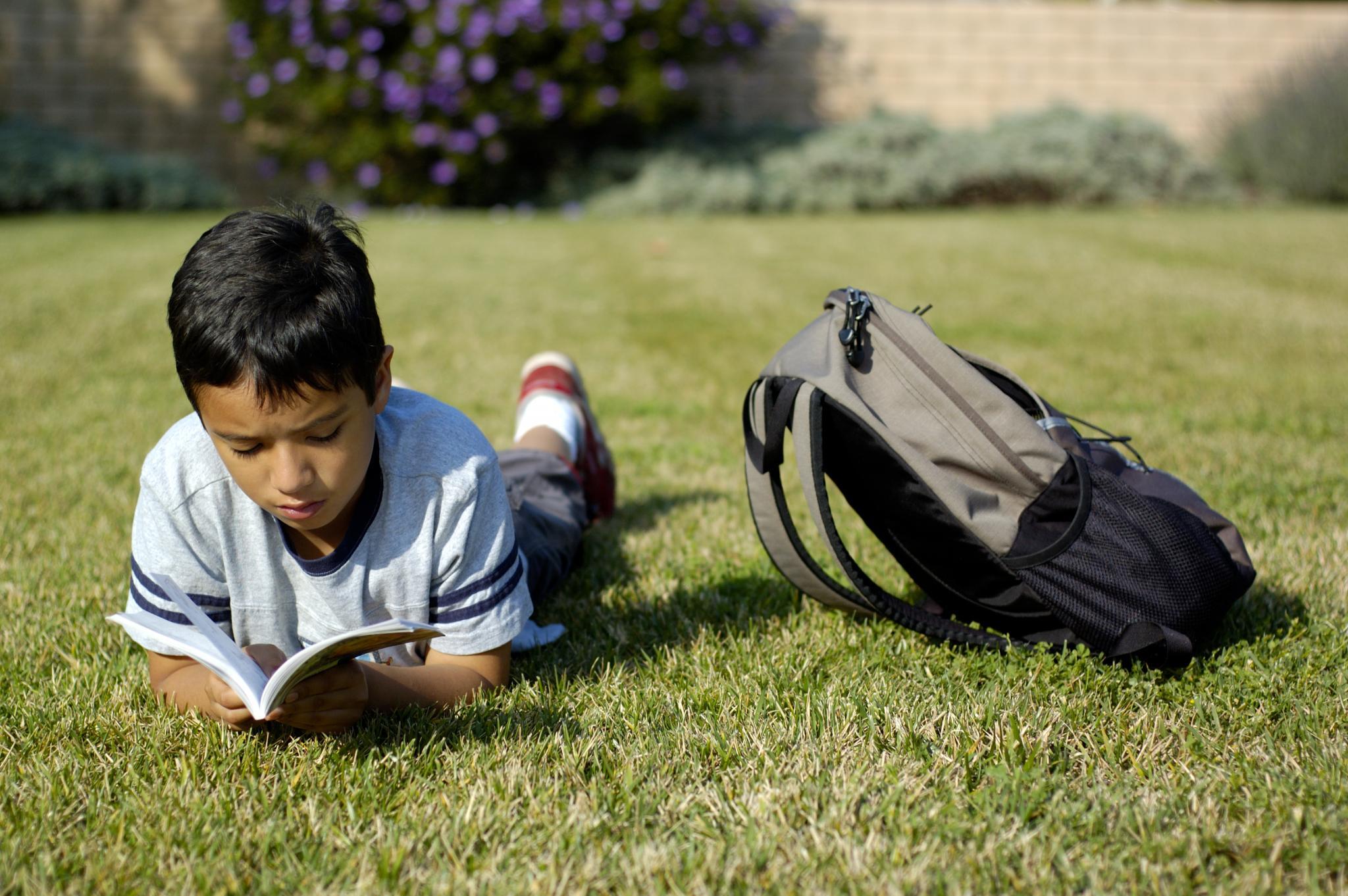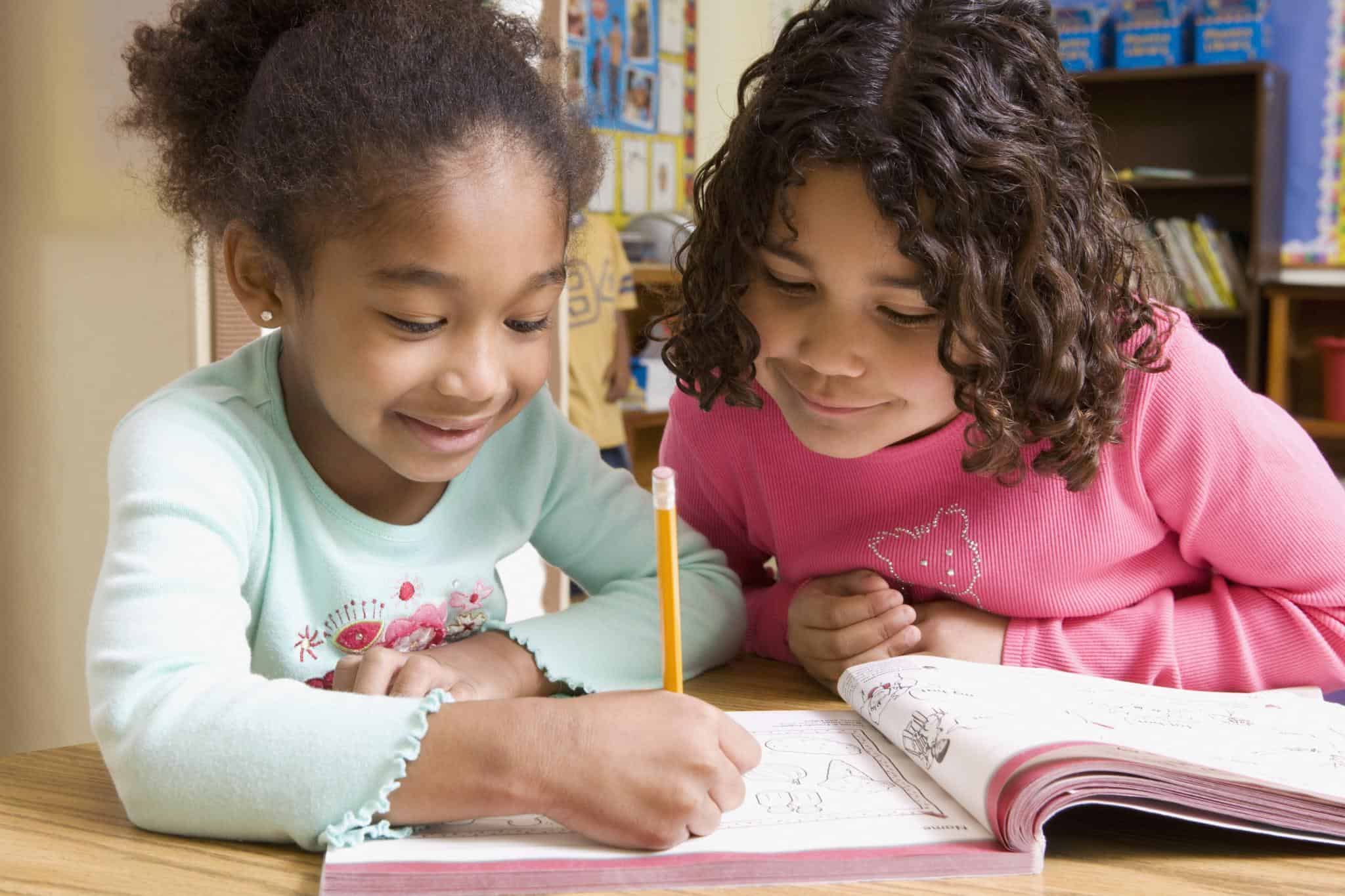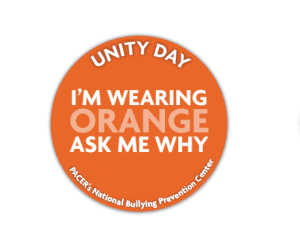One of the most popular debates in early education is over when children should start learning to read. Some feel that teaching children literacy before kindergarten overworks their brains, while others believe that the earlier a child learns to read, the better. Advocates on both sides of the argument are passionate, and it can be hard to tell which side has it right.
As it turns out, the answer is more complex than you might think. Literacy is not just an academic skill but a multifaceted ability with psychological, social, and linguistic components.[1] Although most students won’t learn reading fluency until elementary school, children naturally pick up pre-literacy skills from infancy onward.
Read on to discover how young children learn to read and the benefits of teaching pre-literacy skills before kindergarten. Then, learn how you can help your child or student develop a love of reading from birth to kindergarten and up.
When Should Children Learn Foundational Reading Skills?
 Traditionalists often say that children who learn to read before kindergarten are not equipped to handle such a complicated skill. But the stages of reading development are much more varied than just being able to read books independently. Students who are read to and who learn basic reading skills before kindergarten have a more positive association with books and make substantial academic gains once they develop full literacy.[2]
Traditionalists often say that children who learn to read before kindergarten are not equipped to handle such a complicated skill. But the stages of reading development are much more varied than just being able to read books independently. Students who are read to and who learn basic reading skills before kindergarten have a more positive association with books and make substantial academic gains once they develop full literacy.[2]
The best way to reach young readers, especially struggling students, is to understand what emergent literacy is as well as the cognitive science behind it.[3] Once children start picking up language skills, they also develop abilities that will help them learn to read later on. The process of early childhood literacy starts in infancy, though some researchers believe it may begin before babies are born. “We have evidence,” says Dr. Nell Duke, early education professor at the University of Michigan, “that even when children are in utero… there is a positive memory or association to that particular set of sounds” when their mothers read to them while they’re in the womb.[4] These fundamental abilities that lead to reading later on are called pre-reading skills.
The definition of pre-reading is any skill or strategy that will help students learn to read in kindergarten, and a few examples include:
- Phonological awareness, or the ability to distinguish sounds from one another
- Listening skills
- Learning new words
- Print recognition, or knowing what books are and how to hold them
- Blending sounds into complex words (like “read” + “ing” = reading)
Several other factors can affect the method in which a student picks up these skills. Only ⅓ of under-resourced students, for example, are read to daily in comparison to ⅔ of high-income students. This can lead to a pre-reading skills gap unless resources are provided to prevent it.[5] Additionally, some learning disabilities like dyslexia or ADHD can alter literacy development. Both parents and teachers can take steps, however, to lessen or prevent these deficiencies.
When a student develops literacy can vary anywhere from PreK to kindergarten or early first grade. But all children can and should learn essential pre-reading skills before they enter school.[6] During early childhood, this responsibility primarily falls on parents and any resources provided to them. Then, through PreK and elementary school, families and educators team up to provide a comprehensive literacy education for their students.
Guided Reading Activities for Babies and Toddlers
Despite programs that may claim otherwise, research agrees that it’s impossible to teach babies how to read.[7] But that doesn’t mean that infants and toddlers don’t benefit from being read to. Even before children know how to talk, reading aloud to them can strengthen their pre-reading skills. Book exposure to babies and toddlers in particular can improve metalinguistic skills like phonological awareness or blending sounds.[8] And on a socioemotional level, doing fun pre-reading activities together can strengthen parent-child relationships during a critical bonding period.[9]
During this period, one trait parents can nurture in their child is a love of reading. You can encourage this through various pre-reading strategies, but a great way to do so for young kids is by reading with plenty of emotion. Even babies who don’t understand language yet can pick up on happy tones and associate books with positive memories.[10] “There seems to be a particular power,” says education professor Dr. Nell Duke, “in… reading aloud books to children.”[11]
Another skill young children can learn during this stage is print recognition. “Certainly one of the things we want,” says Dr. Duke, “is for children to become very familiar with print.”[12] Take your child to the library regularly and gather a variety of books for them to read. Try to choose books on subjects that they’re interested in so they associate reading with happy memories. This can help your child learn to not only recognize what books are but teach them that books are enjoyable.
The more that parents are involved in pre-reading development, the greater a child’s academic gains later on.[13] Try to plan a special reading time with your child every day to get them into a routine.[14] Usually, young children have short attention spans so make this time brief–even one or two picture books a day can have a positive effect. To increase family bonding, turn off your phone or other distractions so the time feels special to your child.
Turning PreK Children into Beginning Readers
 PreK is the time where if you haven’t already, you should begin teaching children letter recognition. Students who develop reading fluency quickest in school are those who know the letter names before they enter kindergarten.[15] Point out words or letters to your child while reading aloud together and try to prompt your child to give their name. This will build critical skills that students can use to develop early reading comprehension later on.
PreK is the time where if you haven’t already, you should begin teaching children letter recognition. Students who develop reading fluency quickest in school are those who know the letter names before they enter kindergarten.[15] Point out words or letters to your child while reading aloud together and try to prompt your child to give their name. This will build critical skills that students can use to develop early reading comprehension later on.
You can also use this as an opportunity to play phonological awareness activities with your child to help them learn letter sounds. While reading a picture book together, for example, try choosing a letter and asking them what sounds it makes. Or while driving or walking around town, ask them for the name and sounds of a letter on a street sign or billboard.[16] Soon, your child may even start to recognize and point out letters without your prompting.
Another fun reading activity for preschoolers is to focus not just on emotions but big idea questions while reading aloud.[17] This can prepare children to develop and use critical thinking while they learn to read. If you’re reading a Cinderella picture book, for example, you could ask your child, “What would you do if you lost your glass slipper?” You may be surprised with how thoughtful your PreK child’s responses become over time.
Although children do not need to learn to write until kindergarten, one simple activity you could do with your PreK student is help them learn to write their name.[18] That way, they’ll know how to hold a pen or pencil and write their name on assignments once they enter school. And since children are often inherently interested in their own name, this assignment can be not only useful but fun, too. If you like, you could also teach them how to write standalone letters and very simple words (like “Mom” or “Hi”).
By the end of the PreK period, your child should become an emergent reader. The definition of emergent reader is a student who can recognize the alphabet and has a strong familiarity with books, among other metalinguistic skills. Not every child learns to read words by the time they start kindergarten, but helping them develop pre-reading abilities will prepare them for school success.
How to Improve Reading Comprehension in Kindergarten
Once children enter kindergarten, they are ready to start learning basic reading skills. One of the best ways for students to pick up reading skills and strategies, according to a 2018 study, is by using a multisensory approach.[19] Whether you’re teaching students in a classroom or your own child at home, try to include audio or visual components. You could, for example, have regular read-alouds or try online reading activities. For early readers especially, multisensory instruction can help them grasp the fundamentals of literacy.
Once children start reading picture books on their own, try to treat reading as a form of entertainment.[20] If children see reading as fun, they’re more likely to pick up books without being prompted. The more students read on their own, the better their literacy and writing skills will develop through exposure. Plus, they’ll be more likely to see reading as an intrinsic reward instead of a task.
 If your child or student didn’t start learning to write in PreK, try helping them write a letter to a friend or family member later in the year. Encourage them to use short words and simple sentences so they can rely as much as possible on their own knowledge. Again, this will help students see reading and writing as enjoyable while sharpening their emergent reader skills. If they want to add a word they don’t know how to spell, walk them through writing the word while pointing out each letter and letter sound.
If your child or student didn’t start learning to write in PreK, try helping them write a letter to a friend or family member later in the year. Encourage them to use short words and simple sentences so they can rely as much as possible on their own knowledge. Again, this will help students see reading and writing as enjoyable while sharpening their emergent reader skills. If they want to add a word they don’t know how to spell, walk them through writing the word while pointing out each letter and letter sound.
For teachers, involve parents in reading activities for kindergarten students as much as you can. You could, for example, assign take-home books or send class newsletters with reading tips for families. Research suggests that if children are taught how to read both at home and at school, their academic gains are higher than their non-home reading peers.[21] Plus, since parents are often unsure how to best help children learn to read, offering help can give them the confidence to teach at home.
Benefits of Teaching Emergent Literacy in Early Childhood
The benefits of reading to children and teaching pre-reading skills from infancy onward are profound. Even simple activities like family read-alouds encourage healthy brain development.[22] But the importance of literacy in early childhood doesn’t stop with academics. Students who learned pre-reading skills before kindergarten often develop a stronger sense of curiosity and better listening skills, too.[23]
More than half (59%) of all children are not prepared for school when they begin kindergarten, and ⅔ of students do not develop reading proficiency by the end of third grade.[24] One of the greatest indicators of whether a student develops kindergarten readiness is how much exposure they had to books as a young child. Children who are taught pre-reading skills early on tend to make greater overall academic gains than those who were not read to as often.
In short, the benefits of teaching early reading are:
- Increased kindergarten readiness
- Improved memory
- Better listening skills
- Stronger sense of curiosity
- Higher academic gains
Whether you’re a parent or an educator, you have an important role to play in teaching kids how to read. The path to literacy begins at birth, and even simple reading activities can have a substantial effect. The earlier parents and educators can help students develop these skills, the greater their literacy gains throughout their academic career.
Sources:
Strickland, D.S. Emergent Literacy: How Young Children Learn to Read and Write. Educational Leadership, March 1990, pp. 18-23.[1]
American Academy of Family Physicians. Early Childhood Literacy. Retrieved from aafp.org: https://www.aafp.org/patient-care/social-determinants-of-health/child-literacy.html.[2]
Torgeson, J.K. Lessons Learned from Research on Interventions for Students Who Have Difficulty Learning to Read. The Voice of Evidence in Reading Research, 2004, pp. 355-82.[3]
Jacobs, L., and Duke, N.K. Pre-K Comprehension Development & Instruction for Ed Equity and Learning. EduTalk Radio, August 2018.[4]
American Association of Pediatrics. Evidence Supporting Early Literacy and Early Learning. Retrieved from aap.org: https://www.aap.org/en-us/literacy/Literacy/For-Professionals/Evidence-Supporting-Early-Literacy-and-Early-Learning/booksbuildconnections_evidencesupportingearlyliteracyandearlylearning.pdf.[5]
Mason, J.M. When Do Children Begin to Read: An Exploration of Four Year Old Children’s Letter and Word Reading Competencies. Reading Research Quarterly, 1980, 15(2), pp. 203-27.[6]
Devitt, J. Can babies learn to read? No, NYU study finds. Retrieved from eurekalert.org: https://www.eurekalert.org/pub_releases/2014-02/nyu-cbl022514.php.[7]
AAP News. Reading with children starting in infancy gives lasting literacy boost. Retrieved from aappublications.org: http://www.aappublications.org/news/2017/05/04/PASLiteracy050417.[8]
American Association of Pediatrics. Evidence Supporting Early Literacy and Early Learning. Retrieved from aap.org: https://www.aap.org/en-us/literacy/Literacy/For-Professionals/Evidence-Supporting-Early-Literacy-and-Early-Learning/booksbuildconnections_evidencesupportingearlyliteracyandearlylearning.pdf.[9]
American Academy of Pediatrics. Why is it Never Too Early to Read With Your Baby? Retrieved from aap.org: https://www.aap.org/en-us/literacy/Literacy/For-Families/Why-It-Is-Never-Too-Late-To-Early-With-Your-Baby/booksbuildconnections_whyitisnevertooearlytoreadtoyourbaby.pdf.[10]
Jacobs, L., and Duke, N.K. Pre-K Comprehension Development & Instruction for Ed Equity and Learning. EduTalk Radio, August 2018.[11]
Ibid.[12]
AAP News. Reading with children starting in infancy gives lasting literacy boost. Retrieved from aappublications.org: http://www.aappublications.org/news/2017/05/04/PASLiteracy050417.[13]
American Academy of Pediatrics. Why is it Never Too Early to Read With Your Baby? Retrieved from aap.org: https://www.aap.org/en-us/literacy/Literacy/For-Families/Why-It-Is-Never-Too-Late-To-Early-With-Your-Baby/booksbuildconnections_whyitisnevertooearlytoreadtoyourbaby.pdf.[14]
American Academy of Family Physicians. Early Childhood Literacy. Retrieved from aafp.org: https://www.aafp.org/patient-care/social-determinants-of-health/child-literacy.html.[15]
Gough, P.B. How children learn to read and why they fail. Annals of Dyslexia, January 1996, 46(1), pp. 1-20.[16]
Scholes, L. Should my young child already be reading? Retrieved from greatschools.org: https://www.greatschools.org/gk/articles/young-children-reading/.[17]
National Education Association. Helping Your Child Learn to Read. National Education Association, 2007.[18]
Smith, G.J., Booth, J.R., and McNorgan, C. Longitudinal Task-Related Functional Connectivity Changes Predict Reading Development. Frontiers in Psychology, December 2018, pp. 6-12.[19]
Sonnenschein, S., Baker, L., Serpell, R., Scher, D., Truit, V.G., and Munsterman, K. Parental Beliefs about Ways to Help Children Learn to Read: The Impact of an Entertainment or a Skills Perspective. Early Child Development and Care, 127 (1), 1997, pp. 111-18.[20]
Cuckle, P. Children Learning to Read — exploring home and school relationships. British Educational Research Center, February 1996, pp. 17-32.[21]
American Association of Pediatrics. Evidence Supporting Early Literacy and Early Learning. Retrieved from aap.org: https://www.aap.org/en-us/literacy/Literacy/For-Professionals/Evidence-Supporting-Early-Literacy-and-Early-Learning/booksbuildconnections_evidencesupportingearlyliteracyandearlylearning.pdf.[22]
American Academy of Family Physicians. Early Childhood Literacy. Retrieved from aafp.org: https://www.aafp.org/patient-care/social-determinants-of-health/child-literacy.html.[23]
Ibid.[24]





